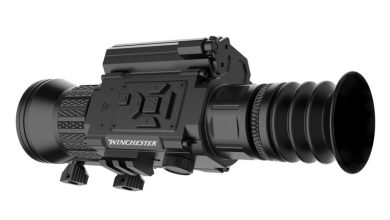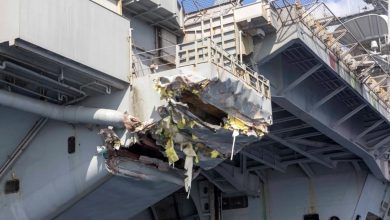Exothermic Pulsefire LRT Flamethrower – The Truth About Guns
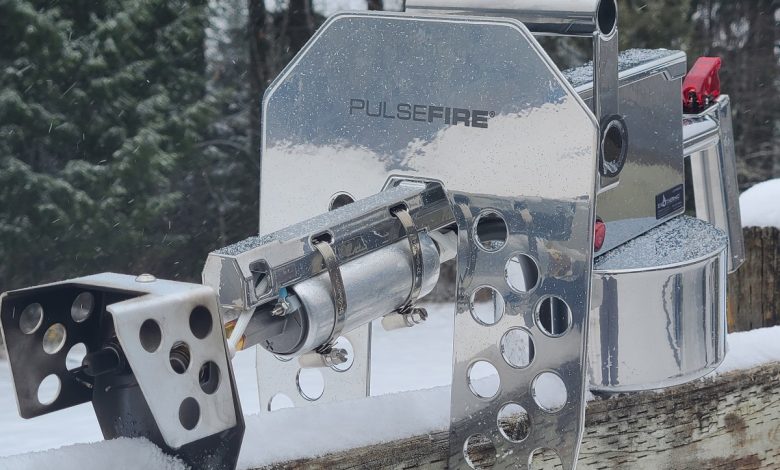
Flamethrowers. Few will ever need them, but everyone wants one, right? I’ve owned one of the stalwart old XM42 models for years and have enjoyed it despite its quirks. The Exothermic Pulsefire LRT (long-range torch) crossed my computer screen, and I had to have one. On paper, at least, it has improved upon the few issues I’ve had with my older XM42. Does a better design (in theory) translate to a better-finished product? Read on…
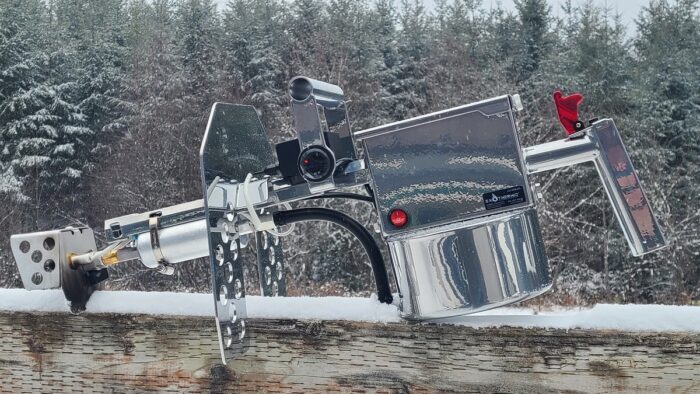
Tech Specs:
| Length | 25.7 in |
| Width | 8.5 in |
| Height | 10.0 in |
| Weight | 6.0 lb |
| Ignition | High frequency electric spark |
| Default Nozzle | 0.72″ solid stream |
| Typical Reach | ≥ 25 ft* |
| Fuel Capacity | 0.35 gal |
| Compatible Fuel | Gasoline, gasoline-diesel mixture |
| Primary Materials | Aluminum, Viton, brass |
| Finish | Powder coat |
| Battery | 2200 mAh 3-cell rechargeable lithium |
Where To Buy
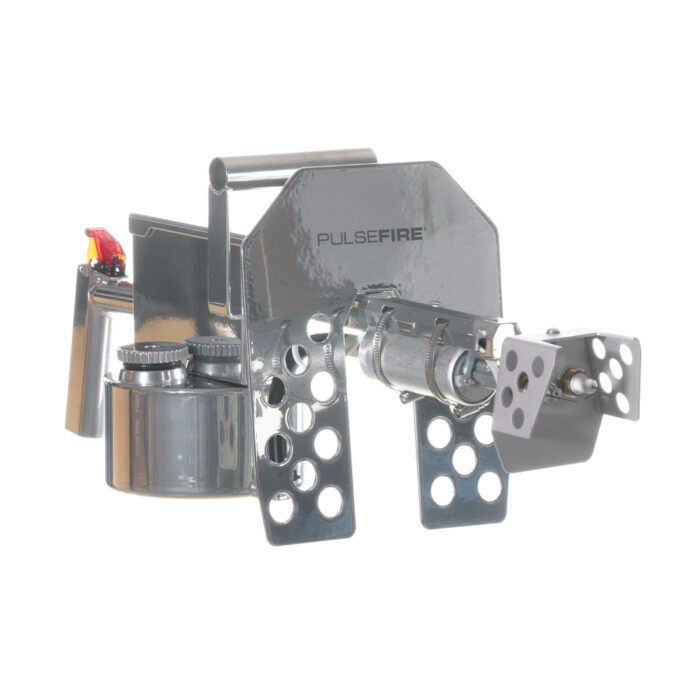
The Pulsefire LRT, as shown, is in a limited-run Mirror Silver finish, with OD Green being the norm.
Breakdown:
The Pulsefire LRT is a sturdy little firespitter at ~6lbs. Everything about this unit is solid, which is what you’d like when you’re holding an electric arc machine and a third of a gallon of gas.
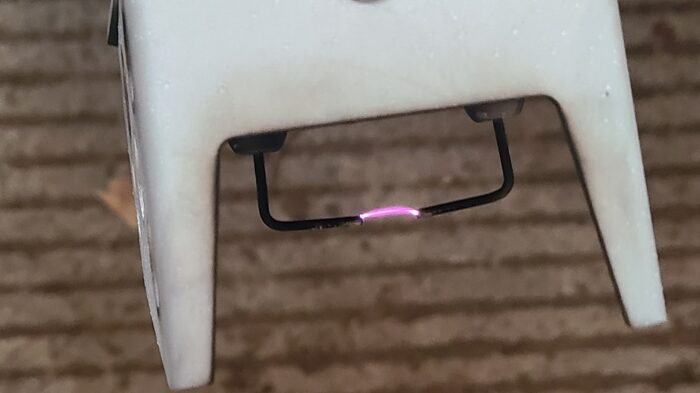
The battery is no joke and will pump and ignite for than five gallons of whoosh between charges.
So what shortcomings in the XM42 has the Exothermic Pulsefire LRT fixed? First, tough battery access. The Pulsefire has a simple thumbscrew to remove the plate that retains the battery for recharging, whereas the XM42 needed an Allen key. Recharging should be easy! Second, the XM42 relied on a bulky butane canister for its pilot light, while the Pulsefire LRT uses a cool electric arc that makes me think a tiny little terminator is about to show up.
Finally, the Pulsefire LRT has a nice little digital display showing you the current voltage output from the battery. When it gets down to 10.5 volts, the system kills power to let you know to charge up.
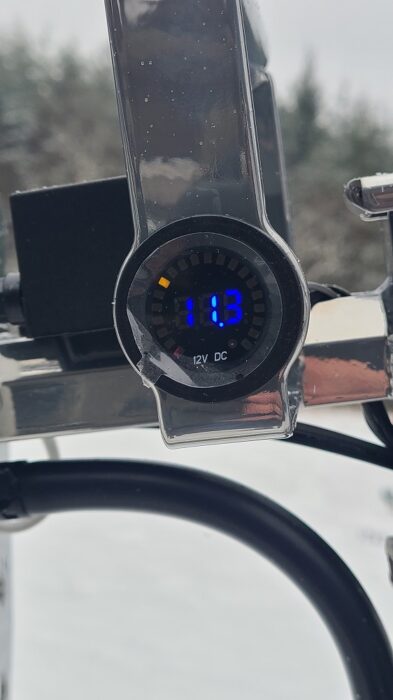
Aside from all the functional pieces, the Pulsefire LRT has some nice style. Besides some mixed retro/future military aesthetics, the cherry on top is the “missile lock” style switch protecting the fire button. Too cool.
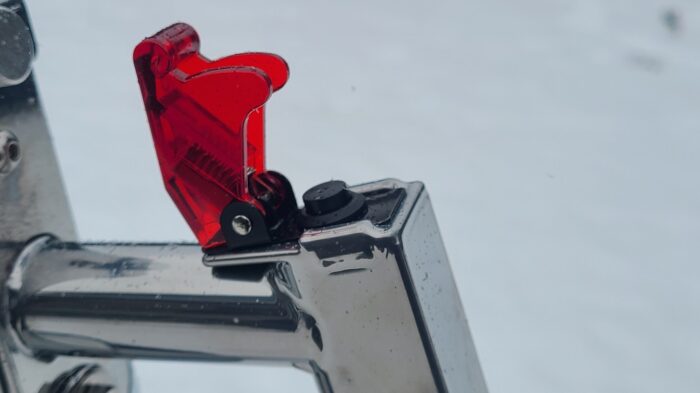
Redundant safety is definitely at play here. Clearly, the consequences of drenching someone in burning fuel are too great to leave up to chance. Besides the system on/off button and the “missile lock” switch cover protecting the fire button, there’s also a manual fuel shut-off valve just behind the nozzle, meaning this thing can be totally shut down for safe storage.
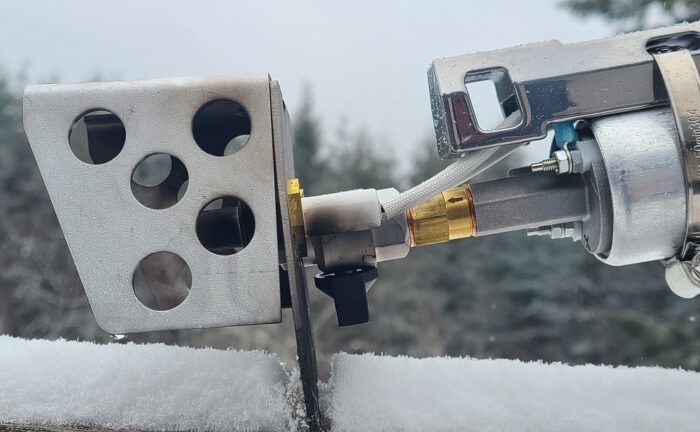
Fire Away!
So… how well does the Pulsefire LRT work? Well, if you’ve ever thought “wow, I really need to light something on fire, but I don’t wanna walk 25 feet”, then this is the product for you! Jokes aside, the Pulsefire is excellent for firing up a bonfire, agricultural burn pile, wasp nest, or a controlled burn on the farm without getting too close.

Remember earlier I mentioned the low voltage cutoff? Herein lies my first hangup with the Pulsefire: while you’re spraying, the voltage (understandably) drops. It comes back up between bursts. Sometimes, the system shutdown seemed triggered by the low voltage cutoff, despite the battery being charged and just between “shots.” I’d go to spray a bit more, and had to wait for a second before I was able to spray again.
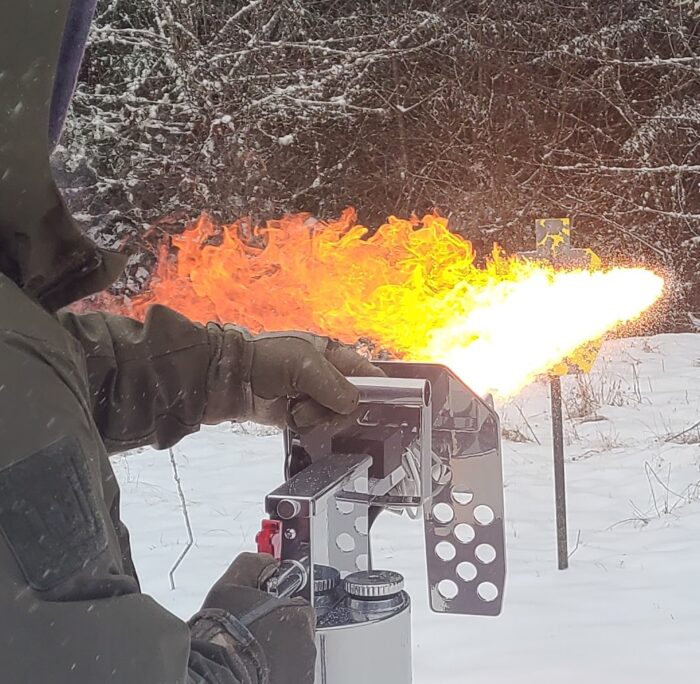
One of the few variables you can control here is the fuel mix, where you can run either straight gasoline or a mix of gas/diesel (up to 50% diesel) for a slower-burning, hotter flame. For fun, the straight gas mix is definitely more visually appealing, and more potent in how it billows out like it’s coming from a little baby dragon. The diesel mix lacks the same level of oomph, but is a lot more effective at getting stubborn piles of brush to ignite. When I’m having fun, it’s gas. When the homestead needs a burn, it’s mixed. While using the Pulsefire, I tried chainsaw gas (50:1 gas to 2-stroke oil mix), resulting in a shorter spray distance and weaker flame. Use regular gas (especially ethanol free) for best results.
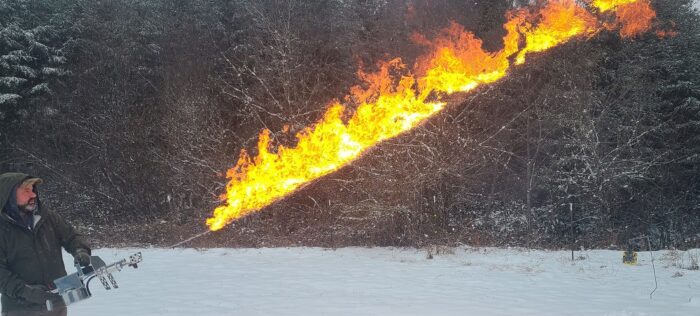
27 seconds doesn’t sound like a long time. Put your hand on a hot stove, or try riding in a rodeo, and 27 seconds can seem much longer. So it is with a flamethrower like the Pulsefire LRT. 27 seconds is your full “cyclic” time, so if you’re sending out bursts of flaming dino juice, your tank will last double or triple that span. Unlike with the XM42, you aren’t limited by the longevity of a butane pilot light, so you don’t feel the pressure to get it over with. Fireballs on demand! Where you want them, when you want them.
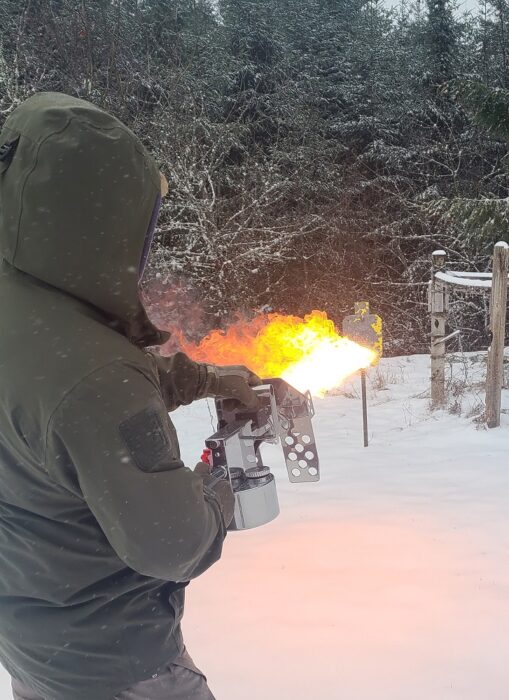
Similarly, 25 feet doesn’t sound like a lot. If I’m tossing a football to my oldest, that’s a low effort throw. When the breath of Smaug is billowing outwards in a deadly stream of roasting flame, it feels pretty damn sufficient.
The Pulsefire LRT is built from “billet aluminum, with robitic welds 100% fluoroelastomer seals.” I’ll be honest, I haven’t tossed this around and beat it up the way I normally do with firearms. Something about exploding gives me a moment’s pause. The Pulsefire LRT though, appears and feels extremely well built. I’m sure Exothermic’s designers and lawyers agreed this unit had to be overbuilt before selling tens of thousands of units.
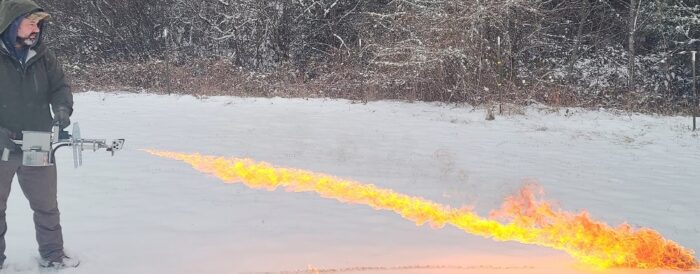
An interesting note, flamethrowers like this work better above freezing. I noticed when the temperature dropped into the teens the gasoline was thicker, produced far less vapor (the really flammable part) and left more unburned fuel hitting the ground. My photoshoot at 19 degrees (F) was less impressive than days above freezing, but the Pulsefire wasn’t to blame, just physics.
Bottom Line:
The Exothermic Pulsefire LRT makes a strong case for what a small, personal flamethrower should look like, and how it should perform. For many, such a device may not fill a utilitarian need, but for nearly everyone the Pulsefire would be as fun as fireworks.
The arc ignition system is a generational improvement over the butane canister ignition device.
The Exothermic Pulsefire LRT currently runs $609.99. Do you need one? I don’t know, but whether it’s a need or a want, this is a well-built and highly functional option for you to consider. I only plan on keeping one flamethrower around, and this is the one.
Read the full article here


